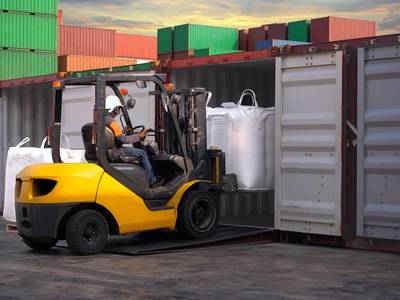Eight Propane Forklift Safety Considerations Crews Need to Know
Material handling equipment, like forklifts, are vital to a port’s day-to-day operations. Forklifts enable employees to keep containers and other heavy materials on the move during their shift. But due to the nature of the equipment, forklifts introduce some workplace hazards that crews need to be aware of — and know how to avoid.
The Occupational Safety and Health Administration (OSHA) conducted a study analyzing forklift-related accidents, injuries, and fatalities and discovered the top six causes to be operator inattention, lack of training, unstable loads, forklift overturns, operators struck-by load, and elevated employees.
Fortunately for forklift operators, modern forklift technology is safer than ever — but only when operators follow proper safety procedures. To combat common hazards and keep employees safe, OSHA has several safety guidelines in place with regard to forklift operation, maintenance, and required training.
The Propane Education & Research Council — and the propane industry as a whole — are passionate about forklift safety, too. The Propane Council works to educate propane users and has an entire landing page dedicated to forklift safety. There, users can find tips (like those listed below), videos, PERC’s trivia challenge, and more.
- Keep it secure. The pressure relief valve on a propane forklift cylinder, which provides overpressure protection to the cylinder, should be kept clean, unrestricted, set to the 12 o’clock position, and directed upward at a 45-degree angle when the cylinder is mounted horizontally.
- Buckle up. One of the simplest — yet most important — safety procedures is to buckle up before operating a forklift. A forklift’s seatbelt is designed to protect the operator in case of tip-over.
- Hit the brakes. To help prevent an accident, OSHA directs forklift operators to stop the equipment and set the brake before raising or lowering the forks. Accidents can occur when approaching a load too fast or turning too quickly.
- Watch the ramp. Operators should maintain a safe distance from the edge of ramps in order to prevent dangerous tip-over. When descending a ramp with a loaded forklift, always travel in reverse with the forklift and payload pointed up the grade. When traveling up a ramp with an unloaded forklift, always keep the forks pointed downgrade.
- Make some noise. Slow down and sound the horn to avoid collisions at cross aisles, and anywhere else the forklift visibility may be obstructed.
- Call it a day. When parking, operators should follow proper safety procedures including putting the forklift in neutral and lowering the forks to the floor. If not properly secured, an unattended forklift can be a danger to employees.
- Do the twist. When a propane forklift isn’t in use, turn the service valve clockwise until it’s completely closed.
- Lock it down. Cylinders should be stored in a secure, padlocked rack outside that protects them from sunlight and rain. Local propane suppliers can assist businesses with the best placement for their cylinder cage.
To learn more about propane forklift safety, visit Propane.com/SafetyFirst
 The Author: Matt McDonald is the director of off-road business development at the Propane Education & Research Council. He can be reached at [email protected].
The Author: Matt McDonald is the director of off-road business development at the Propane Education & Research Council. He can be reached at [email protected].

